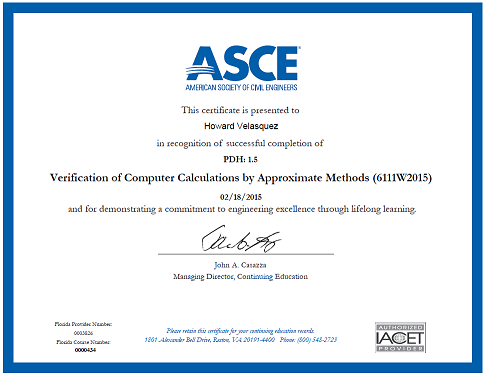By Alexander Newman, P.E., F.ASCE
Sponsored by ASCE’s Structural Engineering Institute and ASCE Continuing Education.
Purpose and Background
Structural design using computer software is now commonplace. Many computer software packages are capable of designing not only separate structural elements but also complete structures. However, the young engineers who often run the computer programs in engineering offices might have limited practical design experience. Sometimes they have difficulty detecting an unreasonable output that could result from an input error or a software glitch. Occasionally, the design aspect of a computer program lags behind its analytical power.
 By contrast, senior-level engineers with plenty of experience tend to deal with managerial tasks rather than repetitive computer analysis. Wouldn’t it be great if those who run the software or check the output could quickly verify the results by some approximate hand calculations? Many engineers wish there was a course addressing this very real need, and this is the webinar they have been seeking!
By contrast, senior-level engineers with plenty of experience tend to deal with managerial tasks rather than repetitive computer analysis. Wouldn’t it be great if those who run the software or check the output could quickly verify the results by some approximate hand calculations? Many engineers wish there was a course addressing this very real need, and this is the webinar they have been seeking!
The presentation covers many rules of thumb for designing building elements of various types and materials. It includes simplified formulas for analysis of continuous beams, rigid frames, basic formulas for quickly computing the required beam stiffness, and other practical data to help quickly evaluate computer-generated designs.
Learning Outcomes
Know how to verify computer calculations by approximate methods of analysis for different structural systems

- Become familiar with the rules of thumb for proportioning various types of framing
- Learn how to quickly find the required beam stiffness for various materials and deflection criteria
Webinar Benefits
- Find out how to conduct a sanity check of computer-generated designs
- Discover simple and once-popular methods of computing forces and bending moments in rigid frames
- Learn how to quickly find the bending moments in continuous beams
- Explore the shortcuts for controlling deflections in beams of various materials
Intended Audience
Structural and civil engineers, architects, and building officials seeking to find out how to verify computer-generated designs and calculations by approximate methods of analysis will benefit from this webinar.
Webinar Outline
Why computer-generated calculations may need verification
Rules of thumb for proportioning various framing systems
Quick analysis of continuous framing
Checking computer design of rigid frames
Shortcuts for beam design and deflections control